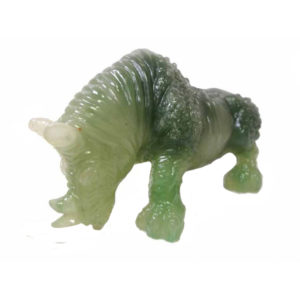The term “Chinese auspicious animal rhinoceros” is not a specific term or concept in Chinese culture or folklore. However, I can provide information about the rhinoceros in general and its symbolic meanings in various cultures.
The rhinoceros is a large, powerful mammal known for its distinctive horn(s) on its snout. In different cultures, the rhinoceros holds different symbolic meanings. Here are some interpretations of the rhinoceros in different contexts:
Strength and Power: The rhinoceros is often associated with strength and power due to its large size, tough exterior, and formidable horns. In some cultures, it is considered a symbol of endurance and resilience.
Protection and Warding off Evil: In certain Asian cultures, including Chinese and Tibetan, the rhinoceros is believed to possess the ability to repel negative energies and protect against evil spirits. Rhinoceros statues or figurines are sometimes placed in homes or businesses for this purpose.
Wealth and Prosperity: In Feng Shui, an ancient Chinese practice of arranging and harmonizing spaces, the rhinoceros is sometimes depicted with a wealth symbol, such as a treasure or ingot, on its back. This association represents the idea of accumulating wealth and attracting prosperity.
Conservation and Environmental Awareness: Given the critical status of rhinoceros populations worldwide, the animal has also become a symbol of conservation efforts and environmental awareness. It highlights the need for protecting endangered species and preserving biodiversity.
It’s important to note that while these symbolic associations exist, they may not be universally recognized or widely practiced. Symbolism can vary across cultures, and individual interpretations may differ as well.
Showing all 2 results




